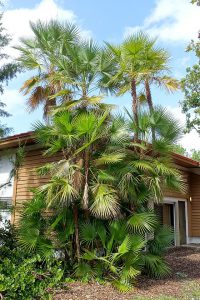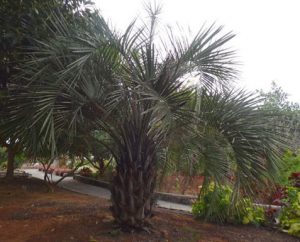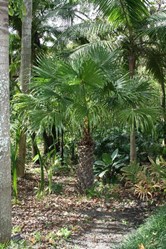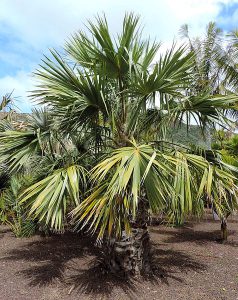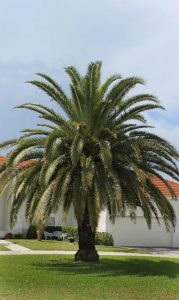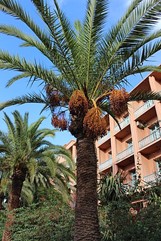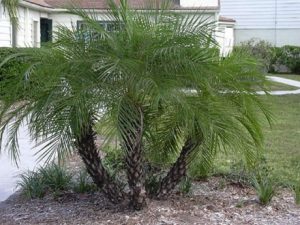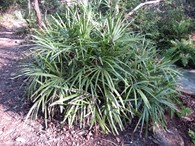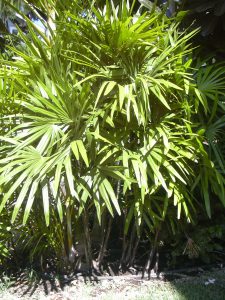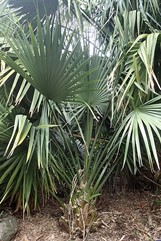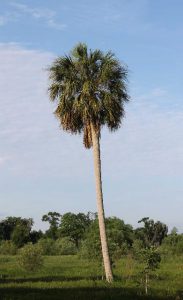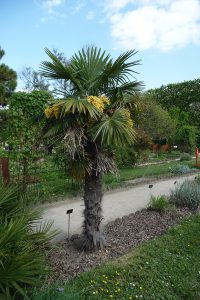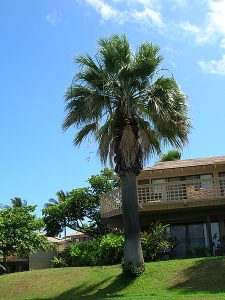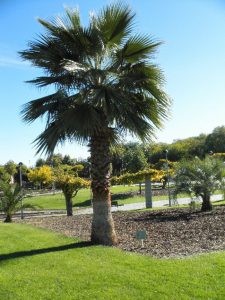Why Palms for the Central Florida landscape?
The real question here might be, “Why not palms for the Central Florida landscape?” Palms provide a geographic aesthetic that separates Floridian gardening and landscaping from much of the rest of the country. These emblematic and evergreen cousins of grass are what people up north dream about while shoveling snow from their frigid driveways bereft of life. Embracing palms in the landscape is largely an aesthetic decision that flavors the landscape in a tropical veneer. Although Central Florida is technically in the subtropics and subject to freezes, palms play an important role in landscape design and management. Palms grow more vertically relative to many trees and therefore can be used along tighter areas throughout the landscape and property borders. Due to favorable biomechanics, most are also fairly to highly resistant to hurricane force winds.
Mind the Cold
There are certain limitations to consider when selecting palm trees. The pallet of available palms is wider in Central Florida relative to most of the Southeastern United States – the rest of the Southeast is largely limited to the most cold hardy of palms. However, the palm diversity of mid-Florida is still limited relative to the smorgasbord of available palms in the tropical stronghold of Southern Florida. Of course, there is a biological explanation. Most of the palms that are suited to Central Florida do not have exposed, green crownshafts – this feature is quite noticeable on certain palms that are regularly used in South Florida, like royal palms (Roystonea regia) and foxtail palms (Wodyetia bifurcata). Instead, the buds of the cold-hardy palms are usually enclosed other parts of the crown and supported foliage – consequently, this leads to superior protection from direct cold air exposure.
Mind the Pests
Like most plants, palms are not without their biological vulnerabilities. Important diseases to consider in Central Florida are Lethal Bronzing Disease (LBD), butt rot (Ganoderma), fusarium wilt, bud rot (Phytophthora palmivora) and trunk rot (Thielaviopsis). Additionally, various insects like the palm weevil (Rhynchophorus cruentatus) can impact palm tree health, but overall, insect threats in Central Florida tend to be more aesthetic and a concern for palms already in decline. By and large, the greatest biological threat to palms in Central Florida is from LBD. However, severity of the disease often depends on species and condition of the palm prior to infection. There has been documentation of over 16 species of palms being infected by LBD – however, date palms (i.e., palms within the genus of Phoenix) tend to be particularly susceptible.
Varying Supplies
Unique to this factsheet is the inclusion of information on the availability of outlined palms as plant material. Different species of plants fall in and out of favor for landscaping purposes, but this sheet covers some of the more common palm species that are both suited to Central Florida’s USDA Hardiness Zone of 9B and some context of availability from local nurseries.
Additional Resources:
- 10 Common Palms of the Tampa Bay Area
- IFAS Publications on Palm Diseases
- IFAS Publications on Pest Insects and Mites
- IFAS Publications on Various Palm Species
- Ornamental Palms for Central Florida
- Ornamental Palms for South Florida
- Planting Palms – UF/IFAS Gardening Solutions
- Palms and Cycads – UF/IFAS Gardening Solutions
 0
0
